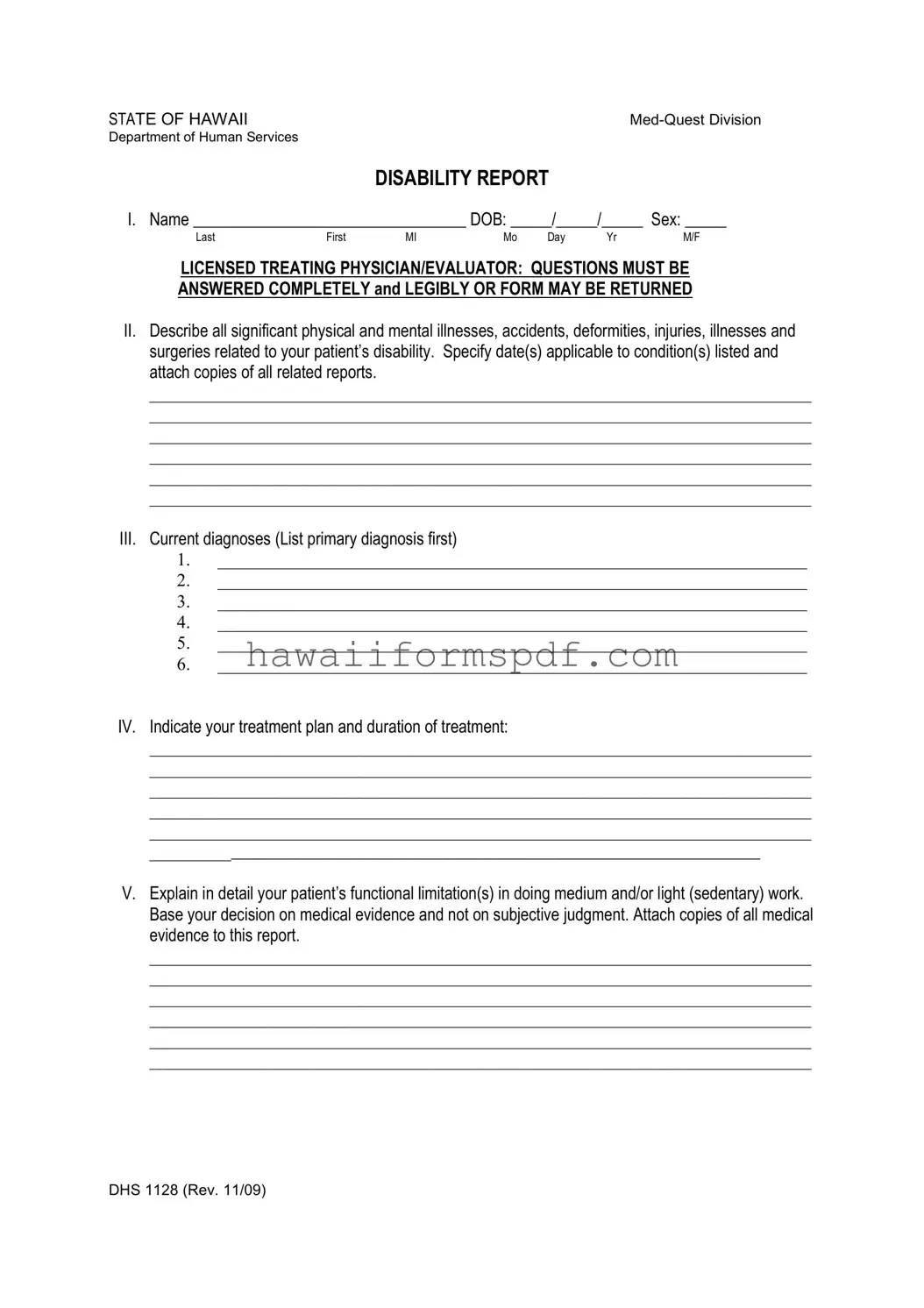STATE OF HAWAII |
Med-Quest Division |
Department of Human Services |
|
DISABILITY REPORT
I. Name _________________________________ DOB: _____/_____/_____ Sex: _____
Last |
First |
MI |
Mo |
Day |
Yr |
M/F |
LICENSED TREATING PHYSICIAN/EVALUATOR: QUESTIONS MUST BE
ANSWERED COMPLETELY AND LEGIBLY OR FORM MAY BE RETURNED
II.Describe all significant physical and mental illnesses, accidents, deformities, injuries, illnesses and surgeries related to your patient’s disability. Specify date(s) applicable to condition(s) listed and attach copies of all related reports.
_________________________________________________________________________
_________________________________________________________________________
_________________________________________________________________________
_________________________________________________________________________
_________________________________________________________________________
_________________________________________________________________________
III.Current diagnoses (List primary diagnosis first)
1._________________________________________________________________
2._________________________________________________________________
3._________________________________________________________________
4._________________________________________________________________
5._________________________________________________________________
6._________________________________________________________________
IV. Indicate your treatment plan and duration of treatment:
_________________________________________________________________________
_________________________________________________________________________
_________________________________________________________________________
_________________________________________________________________________
_________________________________________________________________________
_________________________________________________________________________
V.Explain in detail your patient’s functional limitation(s) in doing medium and/or light (sedentary) work. Base your decision on medical evidence and not on subjective judgment. Attach copies of all medical evidence to this report.
_________________________________________________________________________
_________________________________________________________________________
_________________________________________________________________________
_________________________________________________________________________
_________________________________________________________________________
_________________________________________________________________________

